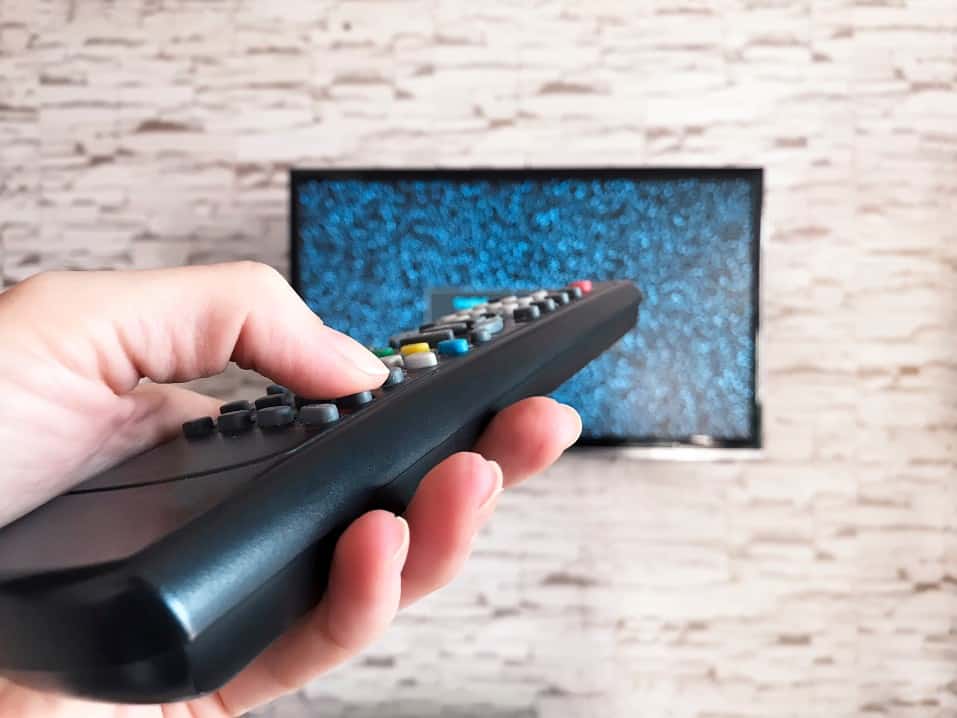Many of the best TVs prioritize the visual components over digital audio. Because TVs typically lack a tremendous internal speaker system, many choose to install their sound systems. In this article, we show you how to connect surround sound to a TV so that you can enjoy the very best audio experience.
KEY TAKEAWAYS:
- Before setup, check for the proper input cable for your audio device.
- Speakers need to be adjusted, placed in the right areas, and tested for optimal sound quality.
- Surround speakers are a great way to boost your audio experience.
And if you have a wireless setup, we can show you how to make a TV Bluetooth accessible.
How to Connect a TV to Surround Sound
Not all surround sound systems are made the same. So make sure to consult your specific systems user manual. That said, below are the general steps to set up an external speaker system.
Insider Tip
For best audio results, angle the front speakers towards the area where the viewers will be sitting.
STEP 1 Plan the Speaker Layout and Setup
- First, think about how you want to set up your speakers around your viewing area.
- Not all surround sound AV receivers connect to TVs the same way. So, examine your receiver and your TV to ensure you have the correct audio input/output mechanisms on both devices. Typically, you’ll need either an HDMI port or RCA jacks. It may take an optical digital cable if you have a newer system.
- Get all the necessary wires together. You’ll need a speaker wire to connect the speakers to the receiver and an HDMI, RCA cable, or optical cable to connect the receiver to the TV.
- Turn off your TV and make sure it’s fully unplugged from the wall outlet.
- Arrange your speakers around the room how you see fit. Sometimes the surround sound system will label which speakers should go to the left or right of the TV.
- Set up the stereo receiver close to the TV, ensuring that it’s close to the power source.
STEP 2 Connect Speakers and Run Wire
- Connect the speaker wires. If you bought a complete system, you should have everything you need, but you’ll need to purchase your wires if you bought your system in separate pieces. If you’re buying bare speaker wire, make sure to buy 10-15% extra in case there are any unexpected obstacles during setup.
- Run the wire to the receiver. Many choose to hide wires by running them under the carpet, but you can also purchase wire floor covering and run it along the room’s edges. You can look here for a guide on how to run your wires on a wall. As a reminder, make sure to leave enough slack so as not to stress the cables.
- Connect each speaker’s wires as stated in your manual. Then, plug in your subwoofer directly to your receiver
STEP 3 Connect AV Receiver and Test Sound
- Finally, plug in your receiver and connect any source devices you want to run on your surround sound system. Then, connect the stereo receiver to the TV’s audio output, plug in your TV, and enjoy your new audio system. You can use your remote control to play with the audio settings to achieve the best sound quality.
Warning
AV receivers need ventilation and can get hot. So, be sure to keep it somewhere that air can flow freely and not in a tight space or a drawer.
F.A.Q.S
Can you connect a TV to a receiver without HDMI?
While HDMI is the most common way to connect a receiver and TV, you can also use RCA cables.
What is needed for a surround sound system?
A surround sound setup usually consists of at least five speakers, one of which is a subwoofer.
What’s the difference between an AV receiver and a stereo receiver?
A stereo amplifier receives only an audio signal and does not handle video input. An AV amplifier will receive both an audio and video signal.
STAT: The height of tweeter speakers should be about 2 feet above ear level. (source)

































![Best Drones Under the Cost of Ferrari in [year] 25 Best Drones Under the Cost of Ferrari in 2026](https://www.gadgetreview.dev/wp-content/uploads/image-test-3.jpg)
![Best LEDs & LCDs in [year] ([month] Reviews) 26 Best LEDs & LCDs in 2026 (January Reviews)](https://www.gadgetreview.dev/wp-content/uploads/Samsung-UN65RU7100FXZA.jpg)
![Best Streaming Services in [year] ([month] Reviews) 27 Best Streaming Services in 2026 (January Reviews)](https://www.gadgetreview.dev/wp-content/uploads/netflix-750x422-1.png)
![Best Streaming Movie and Shows in [year] ([month] Reviews) 28 Best Streaming Movie and Shows in 2026 (January Reviews)](https://www.gadgetreview.dev/wp-content/uploads/Streaming-reviews.jpg)
![Best TVs in [year] ([month] Reviews) 29 Best TVs in 2026 (January Reviews)](https://www.gadgetreview.dev/wp-content/uploads/Sony-XBR55X810C-TV-1.jpg)
![Best Shows on Amazon in [year] ([month] Reviews) 30 Best Shows on Amazon in 2026 (January Reviews)](https://www.gadgetreview.dev/wp-content/uploads/The-Boys-750x474-1.jpg)
![Best Small TVs in [year] 31 Best Small TVs in 2026](https://www.gadgetreview.dev/wp-content/uploads/best-small-tv-image.jpg)
![Best 60 Inch TVs in [year] 32 Best 60 Inch TVs in 2026](https://www.gadgetreview.dev/wp-content/uploads/best-60-inch-tv-image.jpg)
![Best 50 Inch TVs in [year] 33 Best 50 Inch TVs in 2026](https://www.gadgetreview.dev/wp-content/uploads/best-50-inch-tv-imgr.jpg)
![Most Energy Efficient TVs in [year] 34 Most Energy Efficient TVs in 2026](https://www.gadgetreview.dev/wp-content/uploads/most-energy-efficient-tv-image.jpg)
![Best TVs for Apple TV in [year] 35 Best TVs for Apple TV in 2026](https://www.gadgetreview.dev/wp-content/uploads/best-tv-for-apple-tv-image.jpg)
![Best TV Antennas in [year] ([month] Reviews) 36 Best TV Antennas in 2026 (January Reviews)](https://www.gadgetreview.dev/wp-content/uploads/best-tv-antennas-image.jpg)
![Best Mitsubishi TVs in [year] 37 Best Mitsubishi TVs in 2026](https://www.gadgetreview.dev/wp-content/uploads/best-mitsubishi-tv-image.jpg)
![Best Smart TVs in [year] ([month] Reviews) 38 Best Smart TVs in 2026 (January Reviews)](https://www.gadgetreview.dev/wp-content/uploads/best-smart-tvs-image.jpg)
![Best Conference Room TVs in [year] 39 Best Conference Room TVs in 2026](https://www.gadgetreview.dev/wp-content/uploads/best-conference-room-tv-image.jpg)
![Best Dumb TVs in [year] 40 Best Dumb TVs in 2026](https://www.gadgetreview.dev/wp-content/uploads/best-dumb-tv-image.jpg)
![Best 80 inch TVs in [year] 41 Best 80 inch TVs in 2026](https://www.gadgetreview.dev/wp-content/uploads/best-80-inch-tv-image.jpg)
![Best Shows on Hulu in [year] ([month] Reviews) 42 Best Shows on Hulu in 2026 (January Reviews)](https://www.gadgetreview.dev/wp-content/uploads/The-Handmaids-Tale-750x422-1.jpg)

















